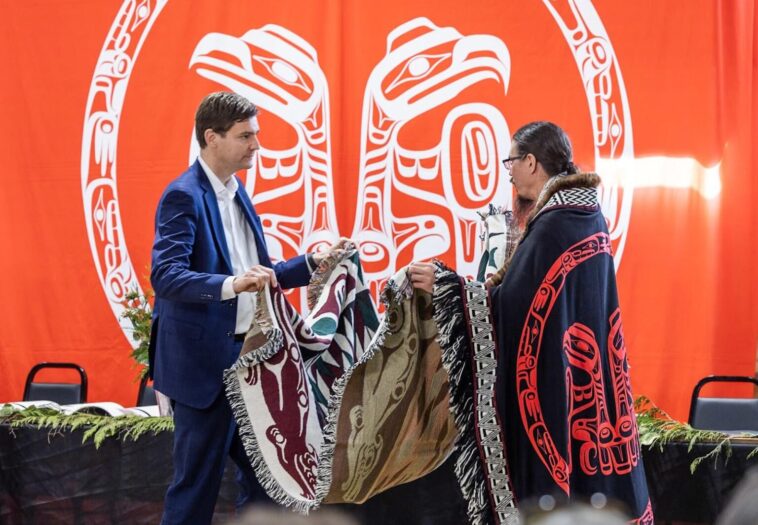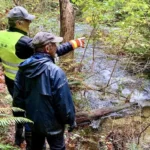On September 5, 2025, the BC Supreme Court declared that the Haida Nation holds Aboriginal title over the entire terrestrial territory of Haida Gwaii, including intertidal and submerged lands down to the low-water mark.
The decision, delivered by Justice Christopher J. Giaschi, is unprecedented in Canada: it is the first time a court has formally recognized Aboriginal title across the entirety of an Indigenous Nation’s land.
“Today, the Haida Nation took a significant step towards meeting its inherent responsibilities to ensure that Haida Gwaii is protected for future generations,” The Haida Nation stated.
The ruling builds directly on two agreements signed in 2024: the Gaayhllxid / Gíihlagalgang “Rising Tide” Agreement with BC and the Chiix̲uujin / Chaaw K̲aawgaa “Big Tide (Low Water)” Agreement with Canada. Together, these agreements set out a framework for reconciling Haida, provincial, and federal laws during a five-year transition period.
The Haida Nation’s formal legal campaign began in 2002, building on earlier federal claims and treaty processes. Though the 2025 decision resolves foundational title claims, a 300-day trial is scheduled for early 2026 to address the remaining issues.
What Will Change?

Aboriginal title is a unique legal recognition under section 35 of Canada’s Constitution Act, 1982. It affirms an Indigenous Nation’s inherent right to the land, along with the responsibility to care for it for future generations. On Haida Gwaii, this recognition works through co-management: decisions about development, resource use, or conservation will be made in partnership between the Haida Nation and Crown governments, providing clarity and ensuring that stewardship values guide how the islands are managed.
“Negotiations and collaborating together for a better future is the best path forward, as it creates opportunity, prosperity and certainty for all,” said Spencer Chandra Herbert, BC minister of Indigenous relations and reconciliation.
BC’s Conservative Caucus, represented by Opposition Leader John Rustad, has raised concerns that the title recognition will lead to “uncertainty over… homes, property and livelihoods.” However, the provincial government clarified back in February that private property rights will remain protected and that local governance and services—including municipalities, schools, airports, and ferries—will continue without disruption. In addition, existing leases and licences will stay in effect.
From Blockades to the Courtroom

For more than a century, the Haida Nation’s rights to their lands and waters were ignored by provincial and federal governments. Logging licences, commercial fisheries, and settlement expansion were authorized without Haida consent, even though the Nation had never ceded its territory by treaty or sale.
The most visible conflict came in the 1970s and 1980s, when large-scale clearcut logging on Lyell Island (Athlii Gwaii) was approved by the province despite strong Haida opposition. Protests in 1985, which led to the arrest of Haida elders and community members, became a national symbol of Indigenous resistance. These demonstrations ultimately forced negotiations with Canada.
The new declaration of Aboriginal title addresses this history by formally recognizing what was denied for generations: the Haida Nation’s legal and constitutional rights to their territory.
It also builds on the stewardship models already in place, such as Gwaii Haanas, where the Haida and federal government jointly manage a national park reserve and heritage site. The Haida Heritage Centre at Ḵay Llnagaay, founded in 2008, further anchors this legacy in community culture and education.
Looking Ahead

While the court declaration changes the legal landscape, daily life on Haida Gwaii is unlikely to shift overnight. Fishing boats still leave Masset harbour before dawn, and grocery stores in Daajing Giids still unload their weekly shipments from ferries crossing Hecate Strait. The difference now is that title has been clarified in law, aligning governance with realities long understood by the people who live here. For the broader community, it serves as a call to listen, learn, and work together to protect this extraordinary place we all call home.







